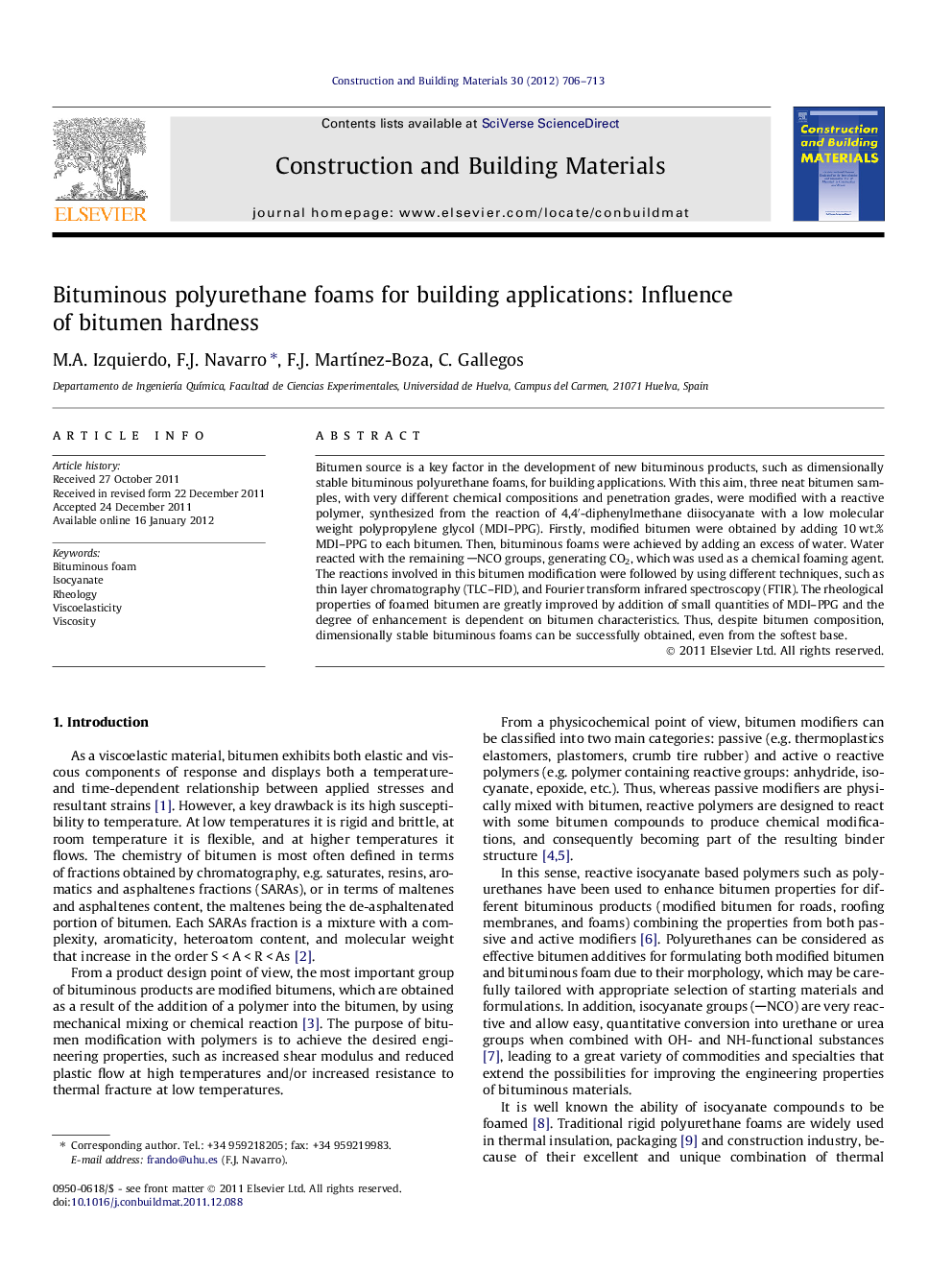| Article ID | Journal | Published Year | Pages | File Type |
|---|---|---|---|---|
| 258573 | Construction and Building Materials | 2012 | 8 Pages |
Bitumen source is a key factor in the development of new bituminous products, such as dimensionally stable bituminous polyurethane foams, for building applications. With this aim, three neat bitumen samples, with very different chemical compositions and penetration grades, were modified with a reactive polymer, synthesized from the reaction of 4,4′-diphenylmethane diisocyanate with a low molecular weight polypropylene glycol (MDI–PPG). Firstly, modified bitumen were obtained by adding 10 wt.% MDI–PPG to each bitumen. Then, bituminous foams were achieved by adding an excess of water. Water reacted with the remaining NCO groups, generating CO2, which was used as a chemical foaming agent. The reactions involved in this bitumen modification were followed by using different techniques, such as thin layer chromatography (TLC–FID), and Fourier transform infrared spectroscopy (FTIR). The rheological properties of foamed bitumen are greatly improved by addition of small quantities of MDI–PPG and the degree of enhancement is dependent on bitumen characteristics. Thus, despite bitumen composition, dimensionally stable bituminous foams can be successfully obtained, even from the softest base.
► Addition of a reactive polymer, MDI–PPG, to bitumen enhances binder properties. ► It is possible to obtain stable foamed bitumens with 10% MDI–PPG and 2% water. ► Rheological properties are improved during the modification/foaming sequence. ► The most significant change in the rheological response is observed after foaming. ► Bitumen modification degree and its reactivity are proportional to bitumen stiffness.
